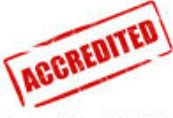
Having said that, being on the inside, and reflecting from the outside, has given me some great insights into how accreditation can be both more rigorous, and more valuable to both Boards and Heads.
Here is my three point checklist for ensuring that you have an effective accreditation process:
1. Measure outcomes, not inputs: Unfortunately, too many sets of accreditation standards are dominated by a list of observable and static conditions. That is they focus on policies and procedures; administrative structures; financial statements; curriculum maps; Board handbooks; etc. Those things can be handled by a checklist and signed off without a visit.
Instead, accrediting bodies should concentrate on hard data (readily available in most schools through Stats-online, CAIS Benchmarks, internal KPIs, etc.). What are the trends in enrolment/retention? What are the operating costs per student? What are the admin/teacher/support/student ratios? How do students perform on external measures? How successful are they at the next level of education (note: not acceptance rates, but rather performance levels). There are many more, but you get the picture. These are the attributes that will tell you how a school is doing.
Then, a team can come in and talk to people (parents, staff, administrators, Board members, students, etc.) about their perceptions of the numbers and of the day to day realities of the school. They can assess school climate, facilities, the quality of the teaching and learning experience, effectiveness of communication strategies (not what they do - like having a fancy website - but what connection they really make). In short, see how the trends illustrated by the data are reflected in how the school actually runs. Successful schools can tell you not just what they do, but why they are doing it, and can demonstrate what impact they are having on all of their stakeholders.
2. Ensure that there is a truly arm's length and professional visiting team: Schools should have little or no input on the make-up of the accreditation visiting team. The construction of the team should be the purview of the professional staff at the accrediting body. They can assess the profile of the school, its stage of development, and possible areas of concern. That is not to say that schools should not request specific expertise that they feel might help them to address a problem or to assess a new initiative. However, they should limit their suggestions to skill sets, not name potential team members.
When recruiting team members, the accrediting body should specifically ask if candidates have a conflict of interest such as: past connection to the school, the Board, the Head, or other members of the leadership team. The integrity of the visiting team, and ultimately the credibility of the report, is directly attributable to the professional process in place for team construction. Unfortunately, no matter how honourable the people involved, accreditation teams can often evolve into a mixture of cronyism, patronage and noblesse oblige where potential team members try to ingratiate themselves with the "powers that be" in order to be included on a visit. Although taking part in a visiting team can be great professional development, there should be no team members who are learning on the job at the expense of the process and at the cost of the school being assessed.
Ultimately, both the value of the report and its acceptance by the Board and the administration of the receiving school are entirely dependent on the credibility of the visitors. I have seen numerous recommendations and often entire reports rejected by the school being assessed on the basis of the quality of the team members. The assessments may be valid, the recommendations thoughtful, and the conclusions solid, but if the team has no purchase with the Board and the admin, then it has been a waste of time and money.
3. A dedicated and arm's length accreditation Council/Board: The accreditation process cannot be confused with a membership approval system. Too many organizations blur the lines between membership criteria and accreditation standards. In such systems, the Executive Director or President who is on one hand tasked with increasing and diversifying membership for both financial and status reasons, is on the other expected to uphold the highest accreditation standards. "Get them in, and keep them out!" This is an unsustainable model.
To be credible, and to reflect the real world of independent school governance and accreditation, each organization should have a completely independent, volunteer board to make all accreditation judgements. Reports should be submitted to this group, with perhaps the Chair of the Visiting Committee appearing to answer questions, but beyond that no-one with a vested interest in the process, including the ED, President, Chair, etc. of the membership Board, should be present. As with bursary applicants in all of our schools, the name, location and other identifiers of the school should be redacted from the report. These should be decisions based upon factual evidence, not reputation or connection. Only then, will we be be able to say that a school has truly and independently met the Standards.
The above three conditions are not meant to be harsh, or to be a criticism of existing practices. They are simply an expression of what we all know should be in place in any quasi-judicial process that seeks to establish rigorous and credible standards for our schools.
Between 1996 and 2008, I took part in more than 80 school accreditation visits. The vast majority of those teams were constructed by me and I was intimately involved in writing their reports and bringing them forward for consideration. I believe that i did an excellent job of helping schools improve their practice to, as we said at the time, "make good schools better". But in the second decade of the 21st century, I know that Boards, parents, school leaders, faculty/staff and students can get more bang for their buck. They are depending on the accreditation process to give that seal of approval that means that their money and time is well spent.
It is our collective professional responsibility to give them what they expect and deserve.





 RSS Feed
RSS Feed